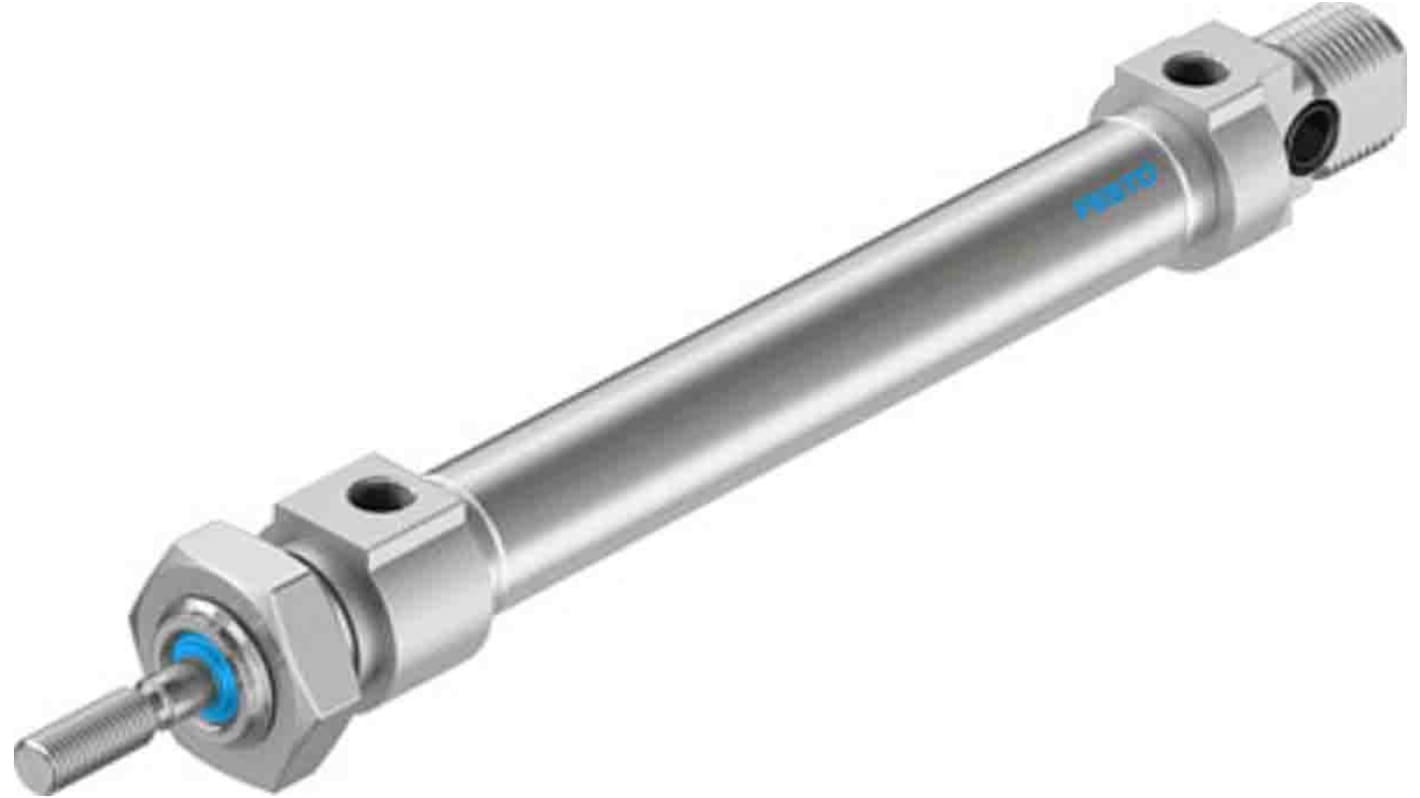Festo ISO Standard Cylinder - 19186, 10mm Bore, 50mm Stroke, DSNU Series, Double Acting
- RS Stock No.:
- 202-1916
- Mfr. Part No.:
- DSNU-10-50-P-A
- Brand:
- Festo

Subtotal (1 unit)*
£41.85
(exc. VAT)
£50.22
(inc. VAT)
FREE delivery for orders over £50.00
In Stock
- 1 unit(s) ready to ship
- Plus 5 unit(s) ready to ship from another location
Need more? Click ‘Check delivery dates’ to find extra stock and lead times.
Units | Per unit |
|---|---|
| 1 + | £41.85 |
*price indicative
- RS Stock No.:
- 202-1916
- Mfr. Part No.:
- DSNU-10-50-P-A
- Brand:
- Festo
Specifications
Technical Reference
Legislation and Compliance
Product Details
Find similar products by selecting one or more attributes.
Select all | Attribute | Value |
|---|---|---|
| Brand | Festo | |
| Manufacturer Series | DSNU | |
| Model Number p | 19186 | |
| Stroke | 50mm | |
| Bore | 10mm | |
| Action | Double | |
| Pneumatic Connection | M5 | |
| Piston Rod Thread Gender | Male | |
| Cushioning Type | Elastic | |
| Dimensions | 15 (Dia.) x 124mm | |
| Diameter | 15mm | |
| Length | 124mm | |
| Maximum Operating Pressure | 10 bar | |
| ISO Standard | ISO 8573-1:2010 | |
| Test Weight | 37.3 g | |
| VDMA Standard | VDMA24364-B1/B2-L | |
| Stroke Interval Weight | 1g @ 10 mm Stroke | |
| Maximum Operating Temperature | +80°C | |
| Minimum Operating Temperature | -20°C | |
| Select all | ||
|---|---|---|
Brand Festo | ||
Manufacturer Series DSNU | ||
Model Number p 19186 | ||
Stroke 50mm | ||
Bore 10mm | ||
Action Double | ||
Pneumatic Connection M5 | ||
Piston Rod Thread Gender Male | ||
Cushioning Type Elastic | ||
Dimensions 15 (Dia.) x 124mm | ||
Diameter 15mm | ||
Length 124mm | ||
Maximum Operating Pressure 10 bar | ||
ISO Standard ISO 8573-1:2010 | ||
Test Weight 37.3 g | ||
VDMA Standard VDMA24364-B1/B2-L | ||
Stroke Interval Weight 1g @ 10 mm Stroke | ||
Maximum Operating Temperature +80°C | ||
Minimum Operating Temperature -20°C | ||
- COO (Country of Origin):
- DE
Festo Pneumatic Roundline Cylinder, 10mm Bore, 50mm Stroke - DSNU-10-50-P-A
Use this pneumatic cylinder from Festo for automated material-handling processes in commercial and industrial environments. It works by using compressed air to create linear forward and reverse motion – use it with a proximity sensor to ensure accurate movement. The unit's piston rod and cylinder barrel are made of high-alloy steel, which is durable and non-corrosive, so it won't rust and can resist the elements. With a high operating pressure limit of 10 bar, this is a suitable option for heavy-duty industrial operations such as clamping, lifting and stopping.
• Can be assembled in any position to suit your design specifications
• Flexible cushioning rings at both ends to reduce noise and vibration
• Nitrile butadiene rubber (NBR) protective seals to prevent air leakage and optimise performance
• Wide operating temperature range of -20°C to +80°C for use in harsh environments
• Flexible cushioning rings at both ends to reduce noise and vibration
• Nitrile butadiene rubber (NBR) protective seals to prevent air leakage and optimise performance
• Wide operating temperature range of -20°C to +80°C for use in harsh environments
Applications
• Industrial automation
• Process and packaging applications
• Assembly lines
• Process and packaging applications
• Assembly lines
What could cause failure in this pneumatic cylinder?
A common cause of failure in cylinders like this one is a seal leak. This could stem from improper installation, excessive heat or physical damage. It's important to change the seal immediately if you notice a leak.
Related links
- Festo ISO Standard Cylinder - 35194 500mm Stroke Double Acting
- Festo Pneumatic Cylinder - 19184 25mm Stroke Double Acting
- Festo Pneumatic Roundline Cylinder - 19183 10mm Stroke Double Acting
- Festo Pneumatic Piston Rod Cylinder - 1908253 30mm Stroke Double Acting
- Festo Pneumatic Piston Rod Cylinder - 1908252 20mm Stroke Double Acting
- Festo Pneumatic Roundline Cylinder - 19188 100mm Stroke Double Acting
- Festo Pneumatic Piston Rod Cylinder - 19185 40mm Stroke Double Acting
- Festo Pneumatic Piston Rod Cylinder - 1908254 60mm Stroke Double Acting
